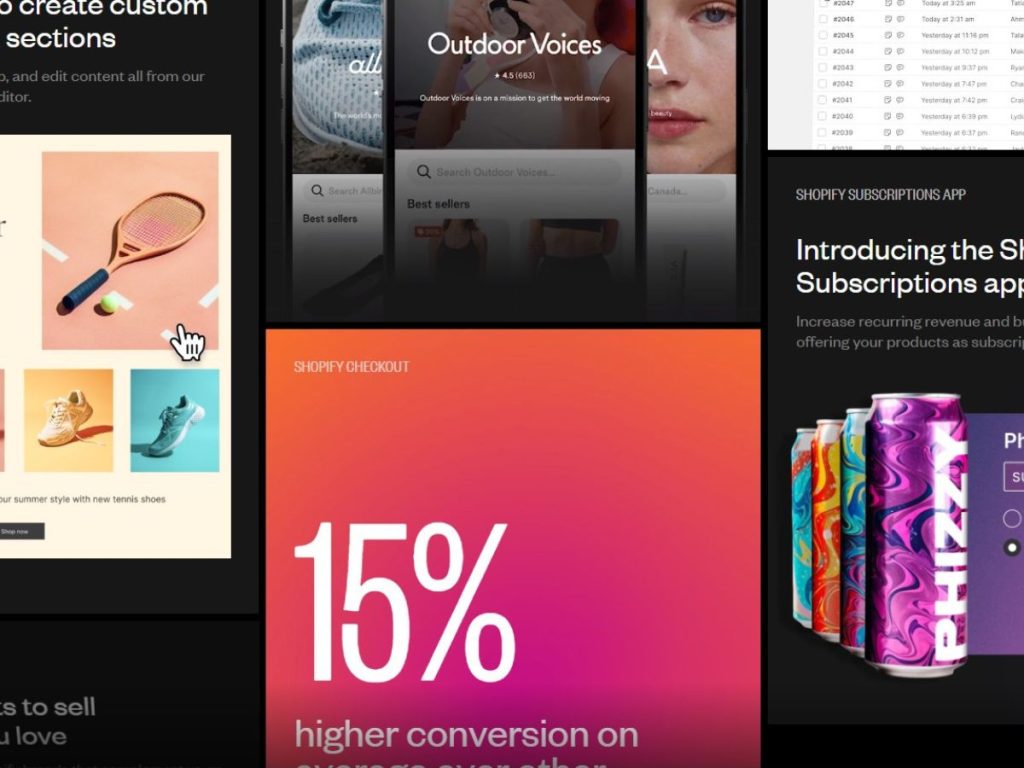Summer has not only brought the sunshine but also an array of fresh updates from Shopify that are bound to heat up your online business. Shopify’s Summer Editions ’23 has landed, and they’re bringing a bouquet of new features to make your e-commerce journey even more vibrant and exciting. We are all very excited to see what these new features bring to web design and development on Shopify platforms, and how this can transform your e-commerce processes. Without further ado, let’s dive into the top 7 features that are sure to make waves in the e-commerce world.
1. Sidekick AI: Your E-Commerce Wingman
Buckle up, because Shopify’s Sidekick AI is here to redefine the way you navigate your e-commerce realm. This cutting-edge AI assistant is more than just a sidekick, it’s your e-commerce partner. Imagine having a virtual companion that not only anticipates your needs but also executes tasks like creating discounts, analyzing store performance, and even fielding your e-commerce queries. It’s like having a personal assistant that’s always one step ahead.

Benefits
Effortless Task Management: Sidekick AI takes on the role of your virtual assistant, handling mundane tasks and freeing up your time for more strategic endeavours in your business.
Real-Time Insights: Shopify claims you can unlock the power of real-time data analysis and insights. Sidekick AI helps you understand customer behaviour, track trends, and make informed decisions to drive success.
Business Intelligence: Think of Sidekick AI as your e-commerce Sherlock Holmes. It dives into your data, identifies patterns, and uncovers hidden opportunities that can give your business a competitive edge.
Limitations
Business Identity Nuances: While Sidekick AI is said to be sharp, it might not fully grasp the nuanced aspects that make your business unique. Its insights are based on data, so it might not capture the intangible qualities that define your brand.
Native Ecosystem Focus: Sidekick AI is your loyal companion within the native Shopify ecosystem. However, it won’t venture far beyond it. It won’t be able to assist with third-party apps or modifications to your store’s theme, limiting its reach to the broader e-commerce landscape.
2. Shopify Flex: Where Design Meets Conversion
Are you ready to turn your online store into a work of art? Shopify’s Summer Editions features Shopify Flex, a new feature for e-commerce design. With an array of layout options available for your homepage, product pages, header, footer, and more, the Flex Theme could help empower users to design an online shopping experience that captivates your audience and drives conversion rates.
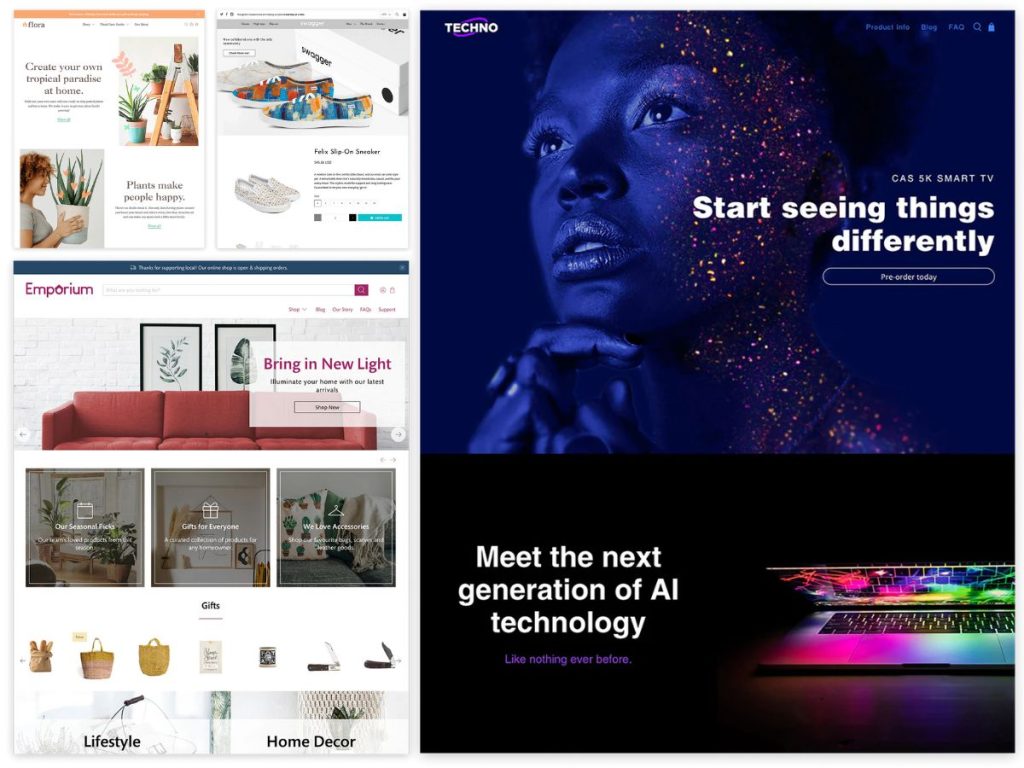
Benefits
Limitless Customization: Flex offers an array of customization options that empower you to sculpt an online storefront that’s an exact match to your brand’s identity and vision.
Mobile and Desktop Harmony: No need to worry about your store’s appearance on different devices. Flex ensures that your storefront shines brilliantly on both mobile phones and desktop screens.
Limitations
Feature Abundance: While Flex is bursting with features, some might find themselves overwhelmed by the amount of options, especially if they’re looking for a more straightforward approach.
Too Much of a Good Thing: Like having a Swiss Army knife when all you need is a simple screwdriver, Flex’s extensive capabilities might feel like overkill for those seeking a more streamlined experience.
3. Shopify Bundles App: Bundle Up and Boost Sales
Many users are very excited about the new Shopify Bundles App, a tool that empowers you to create enchanting product bundles that your customers simply can’t resist. Whether you’re conjuring a ‘Buy One, Get One’ deal or building a curated collection of products, bundles can be the secret ingredient to elevate your summer sales strategy.
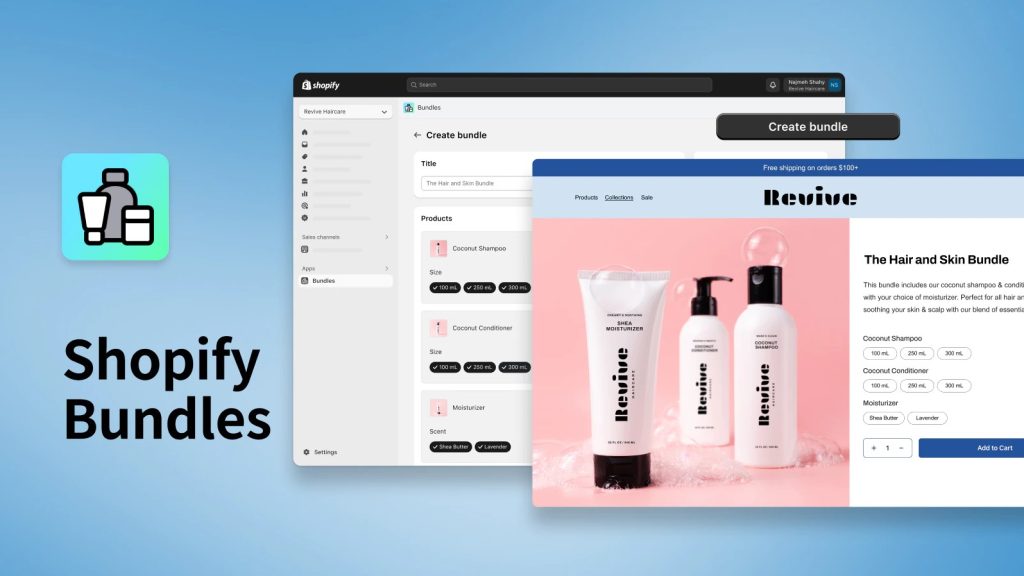
Benefits
Revenue Booster: The Shopify Bundles App holds the potential to significantly increase your revenue. By enticing customers with attractive bundle deals, you encourage them to spend more than they initially intended.
Inventory Optimization: Bundles allow you to cleverly pair products, reducing the burden of excess inventory for individual items. This strategic move can help you manage your stock efficiently.
Shipping Savings: With bundles, you’re packing multiple items in a single shipment, ultimately lowering your shipping costs per unit. It’s like combining several vacation destinations into one ticket!
Limitations
Strategic Balancing Act: While bundles can work wonders, they need a touch of strategy. Overloading your store with bundles might overwhelm customers and confuse them with too many choices. It’s all about striking the right balance.
Value Dilution: Be cautious not to dilute the perceived value of your products through excessive bundling. Customers might start associating your items only with bundled discounts, affecting their willingness to pay full price for individual products.
4. Shopify Subscriptions App: Recurring Revenue Made Easy
Dive into the world of subscription-based sales with the Shopify Subscriptions App. This app isn’t just about convenience, it’s a strategic move to create a reliable stream of recurring revenue for Shopify businesses. With the Subscriptions App, your e-commerce journey could take on new dimensions as you tap into the ever-growing trend of subscription offerings.
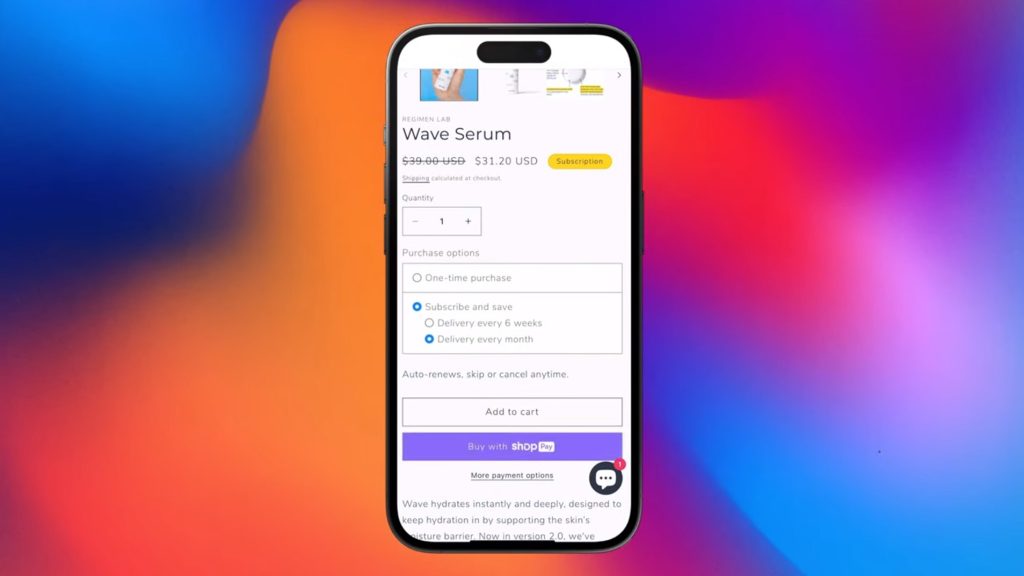
Benefits
Steady Revenue Streams: With the Shopify Subscriptions App, you’re embarking on a journey to establish consistent and predictable revenue streams. It’s like having a dependable group of friends who never miss your summer BBQs.
Enhanced Customer Loyalty: Subscriptions go beyond transactions, they cultivate loyal customer relationships.
Time and Convenience: For customers, subscribing means no more clicking through to reorder. They get your products hassle-free, creating a convenient shopping experience.
Limitations
Product Suitability: While subscriptions offer immense benefits, they might not align with all types of products. Some items, like one-time purchases or seasonal goods, might not be suitable for recurring delivery models.
Customer Preference: Not all customers prefer subscriptions. Some might enjoy the spontaneity of shopping or might not be ready to commit to regular purchases.
Initial Setup: Setting up a subscription model might require some initial adjustments to your business operations, including inventory management and customer support, which could be challenging for businesses not accustomed to this approach.
5. Shopify Marketplace Connect App: Expand Your Horizons
Shopify’s Summer Editions is expanding into new territory with the Marketplace Connect App. It works alongside the global giants of e-commerce, such as Amazon, Walmart, eBay, and more. New opportunities for connectivity and seamless integrations here will make selling on other platforms much easier for many users.
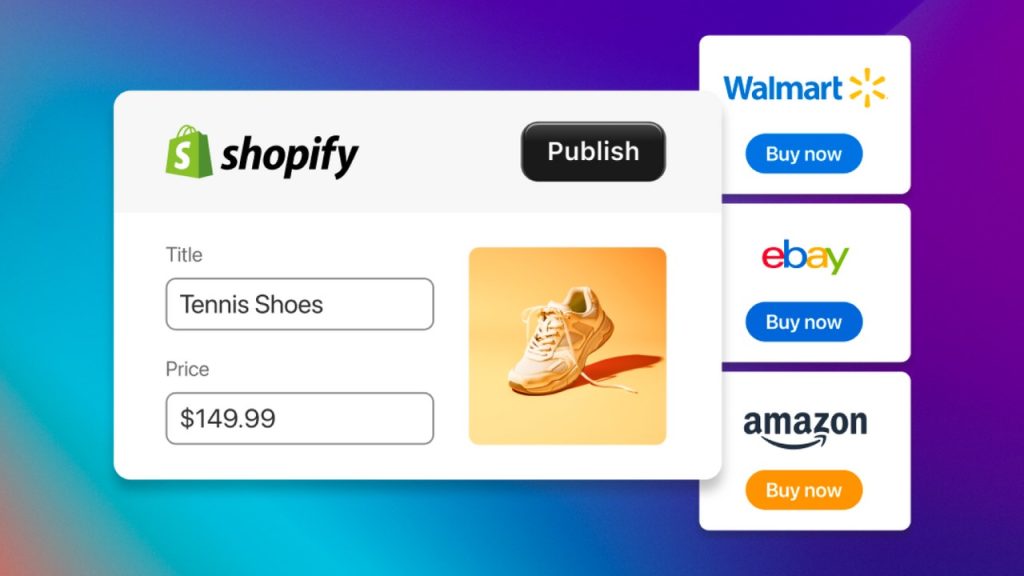
Benefits
Global Reach: With the Shopify Marketplace Connect App, you’re not just a seller anymore, you’re a global entrepreneur. Tap into the immense customer base of renowned marketplaces to extend your reach.
Increased Sales: Diversifying your sales channels to include major marketplaces can significantly boost your revenue. It’s like setting up shop in a bustling marketplace where foot traffic is constant and diverse.
Enhanced Brand Visibility: Your products gain exposure on established platforms, which can lead to improved brand recognition. It’s similar to having your own billboard in the busiest part of town.
Limitations
Platform Adaptation: While the Shopify Marketplace Connect App offers access to various marketplaces, managing multiple platforms can be intricate. Each marketplace has its own rules, audience, and optimization techniques, requiring tailored strategies for each.
Complex Management: Coordinating inventory, listings, and orders across multiple platforms can be a challenge. You’ll need to dedicate time and effort to ensure seamless operations in each marketplace.
Potential Competition: Marketplaces host numerous sellers, which means you’ll be competing for attention and sales with other businesses. Standing out in a crowded space demands careful planning and differentiation strategies.
6. Shopify Improved B2B Features: B2B Made Better
For the B2B rockstars out there, Shopify’s improved B2B features could be a lifesaver. From personalized company profiles to easy reordering, it’s potentially a great new toolkit to conquer the B2B world.
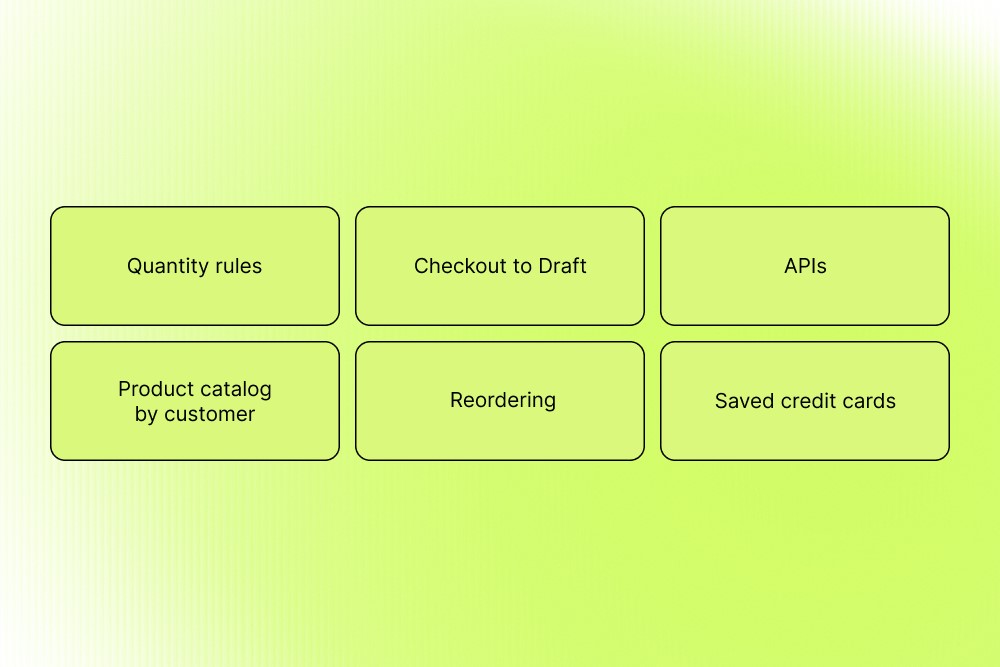
Benefits
Tailored Buying Experience: With personalized company profiles, you can cater to the specific needs of different business clients. It’s like rolling out the red carpet in a VIP lounge, where every B2B customer gets the royal treatment.
Efficient Reordering: Streamlined reordering functionalities make it a breeze for your B2B clients to place recurring orders, fostering customer loyalty and ensuring a smoother purchasing process.
Precise Quantity Rules: Set volume-based pricing, enforce minimum order quantities, and offer case pack options. These features empower you to provide flexible and attractive deals to bulk purchasers, driving higher sales volumes.
Limitations
B2B Focus: These features are designed with B2B businesses in mind, so they might not be as relevant or useful for e-commerce ventures focused exclusively on B2C sales.
Niche Applicability: If your business doesn’t involve the complexities of B2B transactions, some of these advanced features might not align with your business model.
7. Shopify Flow: Effortless Automation for Seamless E-commerce
Shopify Flow is the platform’s newest solution for streamlining e-commerce operations through intelligent automation. By eliminating manual tasks and optimizing workflows, Flow empowers you to focus on strategic growth and customer experience. Crafted as a low-code editor, Shopify Flow ensures that you can harness automation without the need for extensive coding knowledge. This versatile tool connects the dots between various apps, allowing you to create custom automation systems tailored to your business’s requirements.
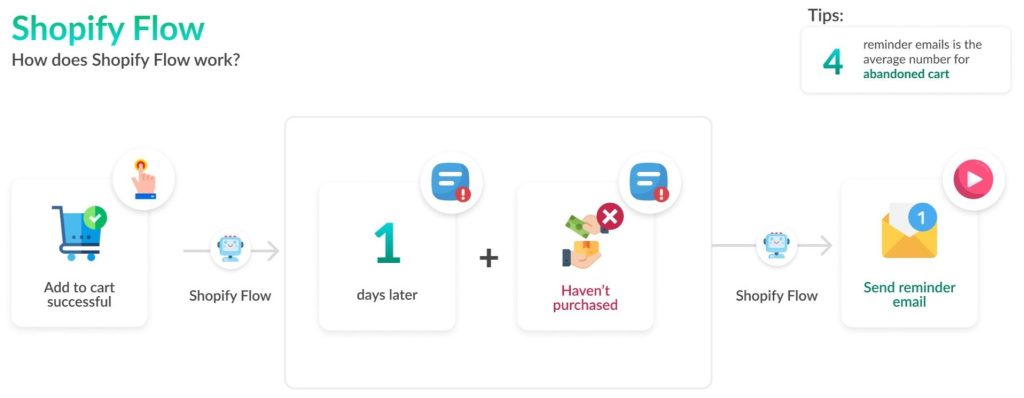
Benefits
Efficiency Redefined: With Shopify Flow, you regain valuable time by automating repetitive tasks. This means more energy and resources to dedicate to business expansion and innovation.
User-Friendly Automation: No coding expertise is required. Shopify Flow’s intuitive three-step builder – trigger, condition, action – simplifies the creation of sophisticated workflows that cater to your specific needs.
Customization Unleashed: Flexibility is at the heart of Shopify Flow. Its customization options enable you to add conditional logic and multiple actions, giving you full control over the automation process.
Seamless Integration: Shopify Flow seamlessly integrates with an array of tools, including tags, meta fields, fulfillment, B2B, Slack, and Google Sheets. This ensures a smooth alignment with your existing business ecosystem.
Limitations
Adaptation for All Sizes: While Shopify Flow’s capabilities are impressive, it might be a bit intricate for smaller businesses with simpler requirements. It’s akin to having a toolkit brimming with advanced tools when basic ones could suffice.
Stay Within the Boundaries: Keep in mind that Shopify Flow’s prowess is primarily within the Shopify realm. It might not extend its expertise to third-party apps or modifications to your store’s theme, necessitating alternative solutions for certain tasks.
In the dynamic world of e-commerce, staying ahead of the curve is not just an option, it’s a necessity. With Shopify’s Summer Editions ’23, your toolkit for success just got a major upgrade. From the ingenious AI-driven insights of Sidekick to the boundless creativity of the Flex, and the streamlined efficiencies offered by Shopify Flow. These features form a symphony of innovation that harmonizes your business operations like never before.

There are a ton of new features out there in Shopify’s Summer Editions 2023 release, and we encourage you to look at them on Shopify’s platforms as well! Many of them are things Shopify users have been asking about for a long time, and others are completely new surprises.


